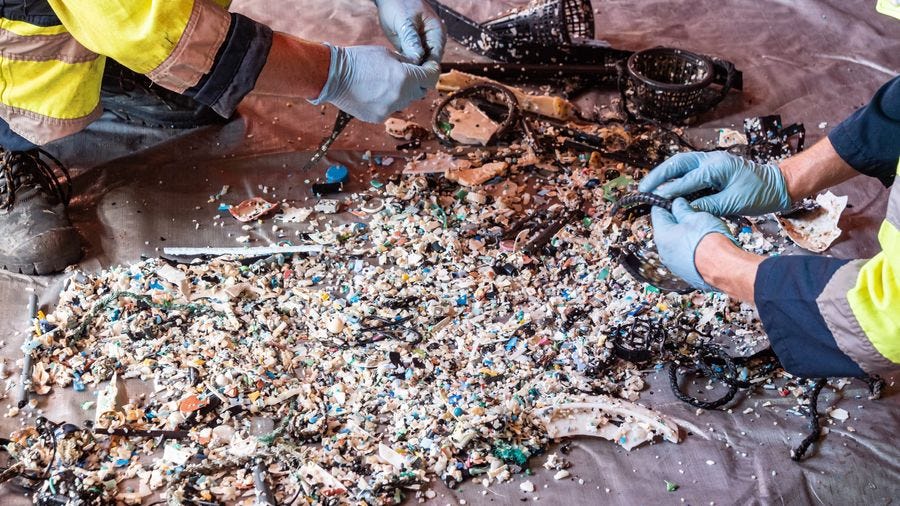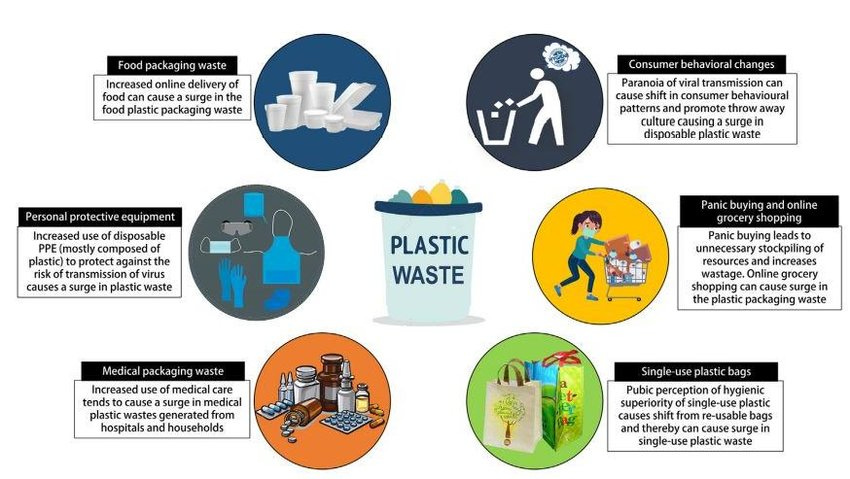Tiny plastics in arterial plaques raise heart disease risk in humans
Ways to reduce the inhalation and Ingestion of Tiny Plastics
Dear Readers,
Welcome to Science Simplified, a newsletter which Unlocks the Wonders of Science, One Simplified Concept at a Time!
Plastics are ubiquitous; they surround us and even permeate our bodies. Yes, they are literally inside us – in our circulation, human tissues such as lungs and liver, and even in breast milk and the placenta. This means that mothers can transfer these plastics to their newborn babies. How do plastics enter our bodies? Once released into the environment, plastics undergo slow degradation, eventually forming microplastics and nanoplastics. These particles are so minute that they can easily travel through air and water, entering our bodies through the nasal passages or mouth. For further insights, I encourage you to read my article published last year titled 'Microplastics: The Silent Invaders Inside Us' (linked below).
Microplastics: The Silent Invaders Inside Us
Dear Readers, Welcome to Science Simplified, a newsletter which Unlocks the Wonders of Science, One Simplified Concept at a Time! In this edition, we delve into the issue of 'Microplastics' and their impact on human health. We find ourselves living in the Plastic Age, where plastic has become ubiquitous in our lives. Not only do we wear plastic materials,…
This is a follow-up article, shedding light on a recent study, published in the New England Journal of Medicine (NJEM) on March 6, 2024. This study, for the first time, revealed a correlation between the presence of micro and nanoplastics in atherosclerotic plaques (arterial blockage) and an increased risk of cardiovascular diseases, stroke, or death in humans.
Plastic Pollution increases the risk of heart diseases
Several studies (1, 2, 3) had previously highlighted that individuals exposed to pollution from plastic release in their workplaces face a higher risk of heart-related diseases and even different forms of cancers compared to the general population.
One such study found that workers handling autoclaves (autoclaves are like pressure cookers used to create a high temperature settings under pressure) or polyvinyl bags, are at higher risk for liver diseases and lung cancer. Additionally, the study showed that workers in blue collar jobs exposed to plastic pollution face a higher risk of both cancerous and non-cancerous diseases.
Additionally, a variety of animal studies conducted on mice and rats have demonstrated a correlation between toxic effects on the heart and exposure to microplastics, whether through inhalation or ingestion. Additionally, these studies showed that microplastics after both ingestion of inhalation, accumulate in heart and other highly vascularized organs (organs that have an extensive network of blood vessels like lung, liver, kidneys, brain and spleen).
Patients with arterial plaques containing nanoplastics are at higher risk of cardiovascular events
This recent NEJM study visually detected microplastics, especially nanoplastics, in carotid artery plaques using advanced microscopes (see images below). Out of 257 patients enrolled in the study (with completed follow-up), 150 patients had evidence of microplastics in their plaques, while 107 subjects did not.
The plaques containing nanoplastics exhibited increased levels of inflammatory markers, suggesting a correlation between the number of nanoplastics and the expression levels of these markers. Plastics, being foreign substance to our body, triggers our immune system in order to eliminate or neutralize them. This results in an escalation in inflammation within the affected tissues. Inflammation serves as a protective mechanism intended to isolate and eliminate the foreign material, repair damaged tissues, and restore normal physiological function. However, the prolonged presence of nanoplastics can lead to chronic inflammation, which may contribute to tissue damage and the progression of various diseases, including cardiovascular diseases.

During the follow-up of all patients, the study observed that those with nanoplastics in their plaques were 4.53 times more likely to experience a cardiovascular event (such as a heart attack, stroke, or death) compared to patients without microplastics in their plaques. This study inferred a statistically significant increase in the risk of heart disease associated with the presence of microplastics in plaques.
Until now, there has been limited information on the health effects of ingested or inhaled microplastics and nanoplastics in humans. This study is significant in filling that gap, but it has its limitations. Since the study was observational, it might have been influenced by other unaccounted factors. This means we can't draw definite cause-and-effect conclusions. Additionally, there is a possibility of plastic contamination in the laboratory.
It is certainly very concerning that plastics are winding up in parts of our bodies where they certainly have no business to be present.
Ways to reduce the inhalation and Ingestion of Microplastics
Avoiding the inhalation and ingestion of microplastics can be challenging in today's world, where plastic pollution is pervasive. However, there are several steps individuals can take to reduce their exposure:
Avoid Heating Food in Plastic Containers: Refrain from heating food or beverages in plastic containers, especially in the microwave. Heat can accelerate the release of microplastics from plastic containers into the food or liquid.
Avoid drinking water from Plastic bottles: particularly single-use ones made from polyethylene terephthalate (PET) can shed microplastics into the water they contain, especially when exposed to heat or sunlight. These microplastics can then be ingested when drinking the water.
Filter Tap Water: Install a water filter at home to ensure access to clean and safe drinking water. Filtered tap water is often more sustainable and cost-effective than bottled water.
Be Mindful of Personal Care Products: Avoid personal care products that contain microbeads, which are tiny plastic particles often used as exfoliants in scrubs and toothpaste. Look for products with natural exfoliants like sugar or salt instead.
Reduce Plastic Packaging: Choose products with minimal or no plastic packaging whenever possible. Buy in bulk or choose products packaged in glass, paper, or other recyclable materials.
Choose Natural Fibers: When purchasing clothing and textiles, opt for natural fibers like cotton, wool, or silk over synthetic materials like polyester or nylon, which shed microfibers when washed.
Use Microfiber Filters: Install microfiber filters on washing machines to capture microfibers released from synthetic fabrics during the washing process, preventing them from entering wastewater and ultimately the environment.
Take Home Message
These measures will help reduce the likelihood of tiny plastics entering your body. Unfortunately, even with a complete ban on plastic usage, we cannot entirely avoid micro and nanoplastic pollution. Over the years, humans have produced millions of tons of plastic waste, which is gradually degrading in our environment—accumulating in water, soil, and even the air we breathe.

During the COVID-19 pandemic alone, over 8 million tons of mismanaged plastic waste were generated worldwide.

While these statistics may seem daunting, they highlight the urgent need for action rather than resignation. By implementing simple strategies, such as those mentioned above, we can begin to address the monumental challenge of plastic pollution. I'm interested in hearing your thoughts on this issue.
Thank you for reading Science Simplified! If you enjoyed this article, let us know what you liked or simply click the like button.
Sharing this article with at least one person helps us reach a wider audience and contribute to spreading valuable information. Your support is greatly appreciated in helping others on their health journey. Thank you!



